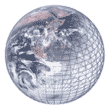The questions of universals (as in Plato’s forms) and wholeness (as in mereology, holism, synergy, etc.) are unsolvable by logic or reason, but second-nature to physical brains.
Philosophers still struggle to say what makes a table a table, and how or why a whole is greater than the sum of its parts. But a brain knows a thing’s type or a part from a whole when it sees it. The so-called universal or whole is entirely the prerogative of each individual brain based on its history of associations.
My hypothesis about learning may not square with biosemiotics, but it could be called bioinformatics if that term were not already taken by computer science. (My definition would be information processing BY biology rather than about it.) But anyway, I think the learning process is straightforward. Meno’s Paradox does not apply. The organism doesn’t need a model of what it is searching for–it searches for everything it is physically capable of searching for. This is like Google’s web bots that crawl the entire web building a condensed symbolic representation of the digital “environment”. The unconscious side of the brain (the bulk of it) does something like that all the time.
Another part of the unconscious brain does something else like Google — it looks at all the collected data and discovers all the possible patterns (and patterns of patterns) that can be found there. No model is required in advance other than some basic start-up algorithm that defines what a pattern is, and this is genetically encoded in all neurons. It is from the strength and relations of these identified patterns that the brain gradually and progressively builds a knowledge base.
Learning is a combination of data mining and progressive pattern detection without the necessity of pre-existing data models or “objects”. The interesting thing is that this same process is currently turning the scientific method on its head, and machines are beginning to learn the way the brain has been learning all along. Thousands if not millions of scientific discoveries are waiting to be found among the hundreds of exabytes of machine-readable data already online.
IMO the simple concepts of association, correlation, and pattern-detection will prove to be the ultimate foundations of epistemology, a subject that has perplexed philosophers and scientists alike for millennia.
(The above “synapsis” obviously leaves out a lot of intermediate steps from simple associations to neural cooperation and division of labor to increasingly sophisticated pattern-detection capabilities on the assumption that a word to the wise is sufficient…and because we haven’t learned all that stuff yet.)
Poor Richard
Related PRA 2.0 Posts
Related articles
- Don’t we often forget the 5 Facts about our Child’s Brain? (awsomepowerofteaching.wordpress.com)
- Unconscious Biases (dranilj1.wordpress.com)
- Insight on Brain Development (enfamil.com)
- Scientists track how a rat changes its mind (msnbc.msn.com)





 Church of Reality
Church of Reality Critiques Of Libertarianism
Critiques Of Libertarianism P2P Foundation
P2P Foundation Stanford Encyclopedia of Philosophy
Stanford Encyclopedia of Philosophy The Stone
The Stone
October 15, 2012 at 5:47 pm
“Learning is a combination of data mining and progressive pattern detection…”, whereas knowledge can be described as pattern recognition, and information can be described as, merely, order or patterns – at least that’s how I feel about this.
October 15, 2012 at 7:03 pm
Anthony,
Thanks for commenting. I agree with your points. Pattern recognition means you have foreknowledge–you know what you are looking for. Pattern detection involves a little foreknowledge about what a “pattern” is, in general, but the patterns that are detected were not necessarily known a priori.
PR
October 15, 2012 at 7:37 pm
Hmm… although I’d agree with your original post, I wouldn’t necessarily agree with your response; I don’t believe any foreknowledge at all is required to recognize patterns, let alone to detect patterns, although foreknowledge or even knowledge of something can enhance somebody’s ability to further recognize patterns. I think anybody can detect and recognize patterns without any foreknowledge or knowledge of patterns, as the detection and recognition of patterns is – how should I put this – a human-being’s default mode. Human beings, as intelligent creatures, are, in my opinion, indeed restricted to the detection and recognition of patterns, as, seemingly, patterns are generally the only thing we’re able to understand. Just my opinion, though.
October 15, 2012 at 7:41 pm
However, as intelligent creatures, (whatever that entails,) it seems we’re able to infer the idea of chaos, disorder, randomness, and what have you, from the detection and recognition of order/patterns.
October 15, 2012 at 7:46 pm
Anthony,
By “foreknowledge about what a “pattern” is” I mean the pattern-detection programs or algorithms passed from one cell/organism to another in the DNA. The neurons use this very basic information to begin their pattern-detection activity. Then as neurons multiply, cooperate, and learn this activity becomes increasingly more sophisticated.
PR
October 15, 2012 at 8:12 pm
Ahh, okay, I was talking about patterns on a whole other level. But it seems we’re restricted to only the detection, recognition, and understanding patterns, despite our ability to infer information/knowledge/ideas seemingly beyond order/patterns.
October 15, 2012 at 8:19 pm
Anthony,
In “goop-think” I write a little about the relationship between patterns, language, and higher thought.
PR
October 15, 2012 at 5:48 pm
Even physical formation, as opposed to information, can be described as merely order/patterns.
October 15, 2012 at 6:58 pm
Anthony,
yes, I agree.